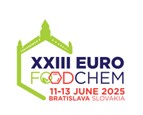Scientific journal
Journal of Food and Nutrition Research
Summary No. 2 / 2015
Žilić, S. – Delić, N. – Basić, Z. – Ignjatović-Micić, D. – Janković, M. – Vančetović, J.
Effects of alkaline cooking and sprouting on bioactive compounds, their bioavailability and relation to antioxidant capacity of maize flour
Journal of Food and Nutrition Research, 54, 2015, No. 2, s. 155-164
Slađana Žilić, Department of Food Technology and Biochemistry, Maize Research Institute, Slobodana Bajića 1, 11085 Belgrade-Zemun, Serbia. E-mail: szilic@mrizp.rs, tel.: +381 11 3756704, fax: +381 11 3754994
Received 11 November 2014; accepted 10 December 2014; published online 10 April 2015
Summary: The contents of total and available niacin, carotenoids, tocopherols, as well as soluble free, conjugated and insoluble bound phenolic compounds was determined in untreated, alkaline-cooked and sprouted kernels of white, sweet and yellow maize. Antioxidant capacity of untreated maize kernels and processed flours was evaluated, too. There was a considerable increase in soluble free and conjugated phenolic compounds contents of maize flour after alkaline cooking and sprouting. The content of total soluble free and conjugated phenolics in maize masa flour and sprouted flour was increased by 35% to 56% and by 46% to 92% as compared to the contents originally present in untreated kernels, respectively. Contrary, conditions of alkaline cooking had strong effect on the loss of bound phenolic compounds, as well as niacin, carotenoids and tocopherols in maize flour. Despite of this, our findings imply that both alkaline cooking and sprouting enhance the antioxidant capacity of maize kernels. According to our results, sprouting is a more effective method to release bound phenolics as well as to enhance the nutritional and functional value of the maize flour. Therefore, sprouted maize, as a rich source of bioavailable phytochemicals, can be used to develop functional maize-based foods.
Keywords: maize; alkaline cooking; sprouting; phenolic compounds; niacin; tocopherols; carotenoids; antioxidant capacity
Download:
(pdf, 121.55 Kb, 1616x)










